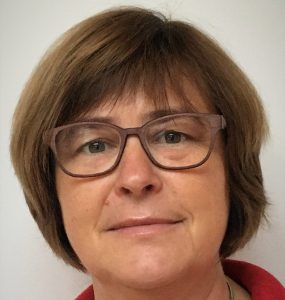
Dr. Heike Bach is founder (1995) and CEO of VISTA, an innovative company specialised on applications of remote sensing in hydrology and agriculture. In 2017 she successfully transferred the SME into a company belonging to the BayWa group. Bringing scientifically sound solutions into practise in order to solve societal challenges is her strong motivation and passion. For example, VISTA’s Smart Farming solutions (TalkingFields) are applied now in more than 20 countries also outside Europe. The core applications include site-specific fertilisation, irrigation management and yield forecasting. VISTA uses the opportunities of digitalisation, big data, environmental models and satellite image analyses to support sustainable agriculture and water management.
Site-specific fertilization can be an important technique for a more efficient and sustainable use of fertilizers. However, presently available services offer application maps that in many cases are very simplistic and lacking a scientific basis. Intuitively assigning nitrogen rates on NDVI background images is one example for those over-simplistic approaches. Also, more sophisticated and validated methods, like the “TalkingFields N-Manager”, only consider the present nitrogen balance and cannot estimate the nitrogen mineralization in the soil during longer periods of time. A digital twin of an agricultural field and the field’s nitrogen status would allow exploring the opportunities of improved fertilization in agricultural practice with model-based decision support.
Digital twins are digital replica of living or non-living physical entities, bridging the physical and the virtual world. They couple models of the real world and simulate environmental conditions by integrating knowledge from data-driven analytical algorithms as well as other available physical knowledge. Applying digital twins to offer decision support for sustainable fertilization requires an integrated simulation of crop growth, plant physiology, yield formation and yield quality, soil moisture and nitrogen dynamics in the soil as well as groundwater leaching.
This requirement is fulfilled with the land-surface process model PROMET that also simulates various management scenarios for fertilization measures (e.g. fertilizer types). Additionally, PROMET includes options for assimilating spatial (or textural) information from satellite data. Time series acquired by up-to-date earth observation sensors, such as the Copernicus satellites, provide information on soil organic matter, leaf area development and plant nitrogen uptake.
A digital twin of a field numerically describes the spatio-temporal N dynamics in a cropping system. Initializing repeated simulations while assuming various fertilization scenarios (e.g. different amounts of N, different fertilizer types, and different dates of application) allows to quantify the impact of these management decisions on yield, grain protein content and nitrogen losses (leaching and gaseous). Based on these findings, the optimum solution can be quantified e.g. by evaluating economic and ecologic trade-offs and defining the best compromise. Supported by information from satellite data, this decision can be made for each point of a 10m raster. The resulting N recommendation map also contains information on the expected yield, grain protein content and nitrogen losses to the atmosphere and/or the groundwater. It thus contains all the information needed to optimize nitrogen efficiencies and follows reproducible rules.
Extending this digital twin to larger regions, e.g. to agriculturally used drinking water protection areas, allows simulating the effects of different fertilization regulations on an aggregated scale. Accordingly, both policy scenarios and farm management decisions can be simulated in order to analyse potential environmental impacts. Digital Twins thus are a management tool for both, farmers and public entities.
Heike Bach1, Philipp Klug1, Franziska Brohmeyer1,
Tobias Hank2, Kersten Kühl2, Wolfram Mauser²
1 VISTA Remote Sensing in Geosciences, D-Munich, www.vista-geo.de
² Department of Geography, Ludwig-Maximilians-University Munich, D-Munich